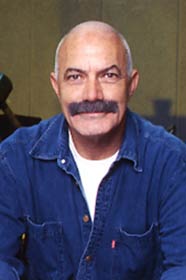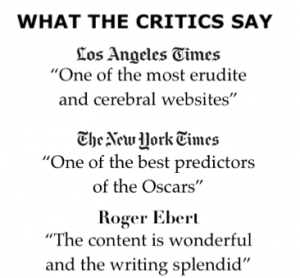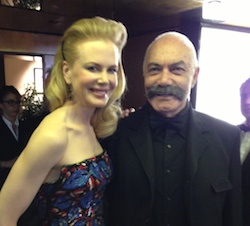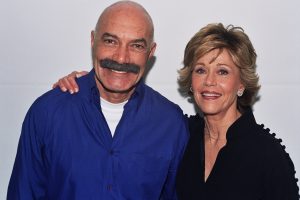
Elements of Brando’s Unique Career
Though Brando’s career spanned half a century, he did his best work in two decades, the 1950s and the 1970s. In the earlier decade, he made his famous films (“A Streetcar Named Desire”) and received his first Oscar for “On the Waterfront”. In the 1950s, he even became a box-office champion with the kind of blockbusters he despised: the historical melodrama “Desire” (1954), the musical “Guys and Dolls” (1955), the sentimental interracial romance “Sayonara” (1957).
One of the anomalies of Brando’s career was that, with the exception of Kazan, who directed him in three pictures, Brando was never associated with a specific filmmaker. For whatever reason, he seldom worked with the same director more than once, the exceptions being Coppola (“The Godfather” and “Apocalypse Now”) and Bertolucci (“Last Tango” and “1900”).
Similarly, Brando never had a favorite or frequent leading lady, unlike Bogart and Bacall, Errol Flynn and Olivia De Havilland, Cary Grant and Irene Dunne, Tracy and Hepburn, John Wayne and Maureen OHara. The studios could never find the right actress for him to form a team, and he was resistant to the whole notion of romantic screen teams.
In the 15 years between “Sayonora” and “The Godfather”, Brando became more interested in politics than acting. By the end of the 1960s, he was washed out as a star, and Hollywood didn’t know what to do with him. Every few years, just when the public was beginning to wonder where had Brando disappeared, he would resurface with a new film.
It’s hard to think of another actor who has enjoyed such a major comeback as Brando, in the early 1970s. “The Godfather” was released in March 1972, and seven months later “Last Tango In Paris” received its world premiere at the New York Film Festival.
In “The Godafther”, Brando’s portrayal of Don Vito Corleone as a seductive yet human monster was brilliant. He stressed the subversive and ambiguous grandeur of a Mafia chief in his multiple roles as undisputed patriarch, loyal family man, cold-hearted murderer, a charismatic authority figure perceived as a religious leader.
When Brando won his second Oscar for “The Godfather” there was also an emotional factor, a reaffirmation of an admittedly great but wayward actor who had become alienated with Hollywood. However, it was a “welcome” extended to an actor in no way concerned with being welcomed.
Brando pushed himself to the limit in “Last Tango in Paris”, as Paul, the disillusioned American expatriate, who tried to anaesthetize the despair over his wife’s suicide by throwing himself into a desperately anonymous affair. It was the finest work of his career to which he poured out his heart, body, and soul. Brando later claimed that “Last Tango”, arguably the greatest screen performance ever committed to celluloid, exhausted nd drained him of energy.
“The Godfather” and “Last Tango” refocused the attention on Brando the actor. Unfortunately, Brando’s reemergence as a star was brief. Up until his death, critics continued to lament his laziness, bad judgment, careless choice of roles.
Truth to tell, Brando made mostly bad films. Of his 40 features, I can count on two hands (at most) the number of his interesting films. The rest were mediocre or below mediocre pictures, made for the lucrative amounts of money they generated.
Yet Brando was riveting to watch to the end of his career, even when he was at his most embarrassing. He remained graceful even when his size bloated to unrecognizable proportions. He continued to show an almost childlike sense of playfulness and tenderness as, for example, in “Don Juan DeMarco” (1995), one of his last films, in which he played a shrink easily seduced into the fantasy world of his patient’s delusional Latin lover (played by Johnny Depp).
Genuine folk heroes are created when the public remembers the name of the fictitious characters as vividly as the names of the actors who play them. By this criterion, Brando created four of the greatest characterizations in film history: Stanley Kowalski in “Streetcar Named Desire”, Terry Maloy in “On the Waterfront”, Don Vito Corleone in T”he Godfather”, and Paul in “Last Tango in Paris”, the jewel in Brando’s crown.
The 1996 documentary, “Marlon Brando: The Wild One,” contains one true curiosity, a startling glimpse from the 1950s of Brando dressed up as a woman with a hefty bust, clowning around in a friend’s apartment with Monty Clift in the background. It’s an unaffected moment, hinting of boundless futures for both men, made all the more poignant due to Clift’s untimely death and Brando’s precipitous decline.










